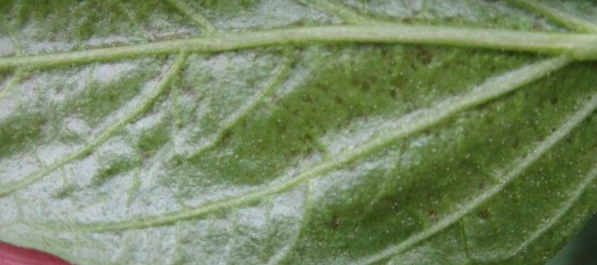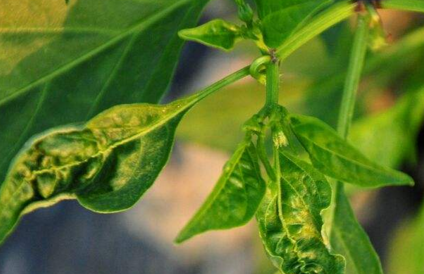Occurrence and control of sassafras on pepper
The tea scented tea is also known as the tea scorpion line, the common name tea leaves, white spiders, broad-body scorpions, etc., distributed throughout the country, and the south, north and south of the Yangtze River are seriously affected. In recent years, the damage caused by the sassafras has caused a large reduction in the production of peppers every year. The lighter production is reduced by 25%, and the heavy ones are reduced by 50%. Because the corpus callosum is extremely small, it is difficult for the naked eye to observe and recognize, and its harmful symptoms are often mistaken for physiological diseases and viral diseases, so it has caused great difficulties in prevention and treatment. Through three years of investigation and research, the author has carried out a large number of pharmaceutical tests, and basically grasped the occurrence rules and prevention methods of the tea yellow peony in the pepper of Meitan County. Time of occurrence The karmic period in Meitan County is from May to August, and the peak period of damage is from June to July. The optimum temperature for the development of the sassafras is 16 to 23 ° C, and the relative humidity is 80% to 90%. Due to the higher temperature from June to July, the rain is more and the humidity is higher, so it is particularly beneficial for the reproduction of the tea sassafras. The symptoms of jaundice are harmful to pepper The sorghum and juveniles of the sassafras are concentrated in the tender leaves of the pepper, and the back of the damaged leaves are gray-brown or yellow-brown, with oily luster or oil-immersion, the leaves are curled outward, and the leaves are narrowed. Falling leaves, falling flowers, and falling fruit have greatly reduced production. Because the symptoms of jaundice and the symptoms of viral diseases are similar, the diagnosis should be distinguished. Control method   Agricultural control Reasonable rotation and intercropping . The difference in the severity of the sassafras in the field is mainly related to the rotation of the farmland. Where the crops are rotated, the crop phase is changed, the wintering place of the mites is destroyed, and the base number of the wintering insects is reduced, and the damage is light; Blocks, accumulating the number of wintering insect populations of the mites, are conducive to the breeding of mites in the early spring host crops, and the damage is serious. Implementing rotations tailored to local conditions and reducing insect sources are effective ways to control damage. In the case of heavier fields in the year-round, avoiding intercropping with corn and legumes and eliminating the source of insects from intermediate hosts is also a measure to alleviate the damage. Sowing at the right time . The severity of the damage is closely related to the early and late sowing. Sowing and transplanting early, and trying to get a lot of results before the scent of sassafras, to avoid it. The best transplanting period in the county is around April 20. Rational fertilization . In the management of fertilizer and water, the application of nitrogen fertilizer should be avoided, so that the pepper grows green and dense, which causes the occurrence and damage of the tea yellow sputum. Potassium fertilizer should be applied more. Potassium fertilizer not only has the effect of improving plant resistance, but also makes the fruit more bright and the maturity period tends to be consistent, thereby improving the appearance quality of the pepper. Strengthen the pastoral cleanliness . Weeds in the fields, fields, roadsides, ditch, etc. in the winter and spring seasons to reduce the number of wintering insect populations, thus reducing the damage. Breeding resistant varieties. Breeding new varieties and cultivating resistant varieties. Through the experimental investigation, the authors have good anti-caries properties, such as “Zhaotianjiao†and “Zunjiao No.1†and “Xiaojiao No.1â€, and the flavor is strong, the spicy taste is strong, and the yield is high, which is worth promoting. . Chemical control Chemical control is an important measure to prevent and control tea jaundice. When controlling, it is necessary to pay attention to the control period and application method. Because of the short life cycle and strong reproductive capacity of the sassafras, special attention should be paid to early prevention. For Meitan County, the first best application of pesticide control is from late May to early June. At the same time, pepper plants and empty lines should be widely applied for prevention and treatment. When applying the medicine, the nozzle should be facing upwards, and the medicine should be sprayed on the back of the pepper leaves to kill the insect body in the maximum amount to achieve the purpose of prevention and treatment. In the preparation of the liquid, according to the growth of the pepper, a small amount of foliar fertilizer should be added to improve the resistance of the pepper. In the choice of instruments, a sprayer with better fogging effect should be selected so that the liquid can be evenly distributed in various parts of the plant. According to the author's experiments in recent years, the following agents have very good control effects on sassafras: (1) 24.5% green worms 1000 times liquid. (2) 34% Cromwell 1000 times solution: (3) 73% Kloster cream 1000 times solution. (4) 10% imidacloprid wettable powder l000 times solution. (5) 15% anthrone 3000 times solution. (6) 25% Aikato (Quinoxaphos) EC 1000 times solution. Body Temperature Scanner,Temperature Detector Gate,Non-Contact Temperature Measurement,Infrared Temperature Equipment Shenzhen Sunson Tech Co., Ltd , https://www.sunsonkiosk.com
